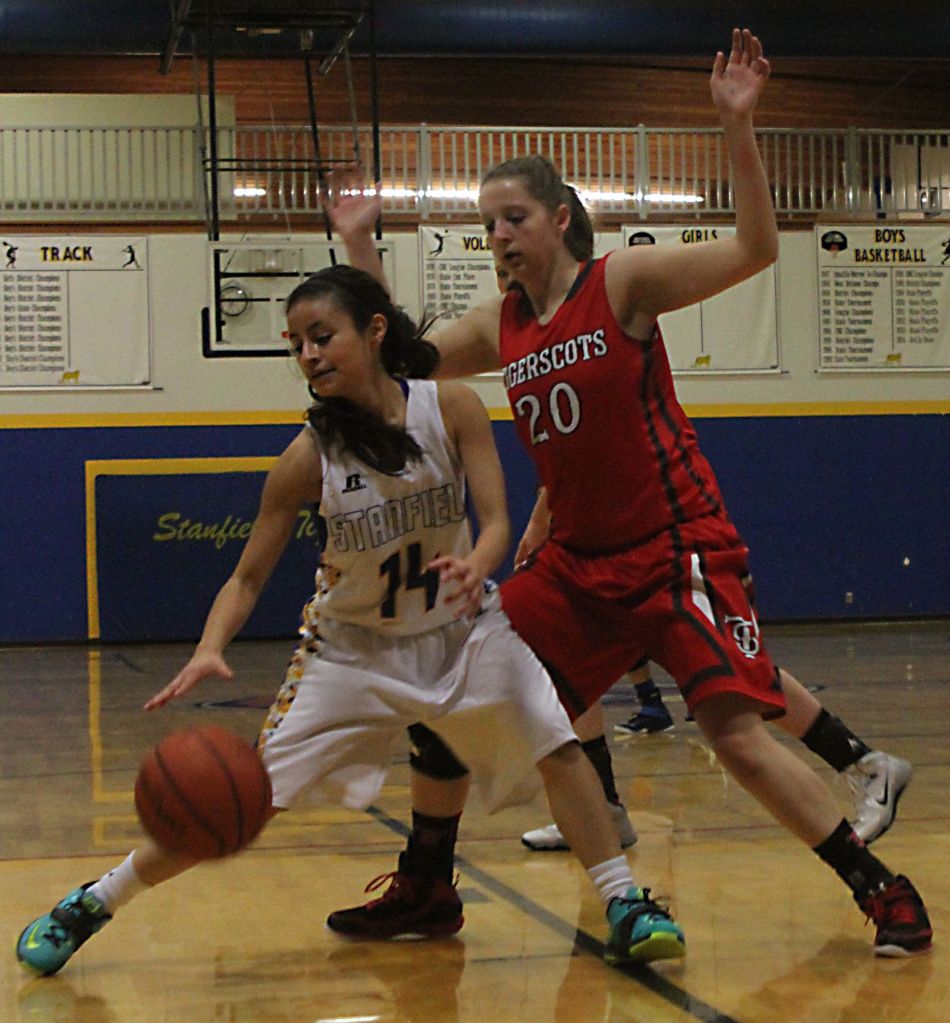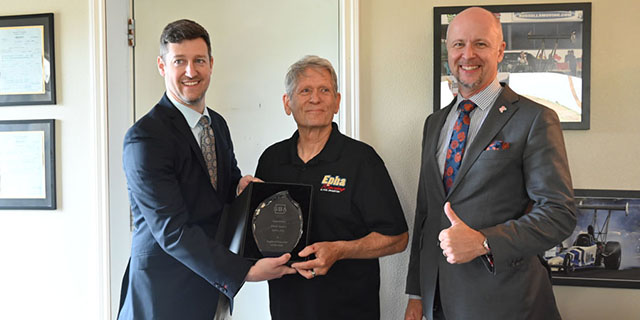Teams adjusting to new hand-check rule after rocky start
Published 4:32 pm Monday, January 12, 2015

- Sam Barbee photo In this photo, Weston-McEwen's Matison Aby's defense is considered legal under the new National Federation of High School Associaton's hand-check rule because her hands are up and she is using her entire body to shield Stanfield's Cynthia Curiel, not her hands.
It’s been an all too common occurrence in local high school basketball games this season: A defender stymies an opponent on offense, only to be called on a foul.
That’s because, before the 2014-15 basketball season started in Oregon, the National Federation of State High School Associations instituted new hand-check rules for all high school basketball teams. A hand-check is a defensive maneuver where the defensive player places his or her hand on an offensive player — usually on the hip — to maintain control of the opposing athlete and gains an advantage because of it.
The NFHS hands down rule books to the state associations in an attempt to even out the rules, so that each state — more or less — is playing by the same rule book.
Cindy Simmons, the Oregon School Activities Association associate director in charge of basketball and also a member of the rules committee for basketball, said the hand-check rule has been a point of emphasis in this state for many years, but merely emphasizing the rule wasn’t doing enough to curb the hand-checking. So, she said, a new clarification of the rule was adopted.
The new rule, however, created problems for local teams. Fouls were up, and the games went longer.
In one Echo girls basketball game early this season, more than 60 fouls were called. All Cougars coach JD Brazil could do at the time was shake his head and say that his players would have to adjust because all the calls were correct, according to the new rules.
Simmons said the new rule clarification makes things fair for players, coaches and officials.
“Anything that’s being called now, should have been called all along,” Simmons said.
She said the goal is for the game in Hermiston, Ashland and Astoria to be called the same way. Therefore, when teams from all over the state, or, more broadly, from across the country, play each other, nobody has a greater advantage than anybody else.
She said, if one team plays in a league or region or state where the hand-check rule is applied forcefully, they have an advantage over teams where close attention isn’t given to that rule.
For the officials, she said, it’s good practice to know what must be whistled, so when they get to a similar situation, they’re not guessing. They know what they are seeing and know what they have to eliminate.
“Hopefully coaches will get tired of the calls and they’ll be eliminated, not because officials stop calling it, but because the kids are playing it right.”
Teams in the area have made the adjustment without too much trouble. Fouls are down, and game times are neat and tidy again. Teams are no longer being whistled for 25 or 30 fouls, and it has a lot to do with both coaches and adjustments made by officials.
Hermiston girls basketball coach Steve Hoffert said he did not make any real adjustments to the way he coaches his team. He said his program has always focused on footwork and the age-old adage of “defend with your feet, not with your hands.”
Hermiston boys coach Jake McElligott said the hand-check rule is a good idea in theory, but it hasn’t been applied evenly throughout the state.
“It seems to be hit or miss where we go,” he said. “When we went two tournaments in Portland, they didn’t really call (the hand-check) at all. In Summit, they didn’t really call it at all. It’ll be interesting to see when we go into league. I think it’s different with each association, each league. I think they call it a little tighter here than they do on the other side.”
Hoffert said he is most concerned that hand-check fouls are being called consistently.
“As long as we know the expectations, I don’t have a problem,” he said. “It’s tough for kids to not know what to expect, and the good kids and good teams adjust. It’s part of the game. If you know what to expect, not many adjustments need to be made.”
NFHS hand-check rule adopted in Oregon
“The following acts constitute a foul when committed against a ball handler/dribbler:
a. Placing two hands on the player.
b. Placing an extended arm bar on the player.
c. Placing and keeping a hand on the player.
d. Contacting the player more than once with the same hand or alternating hands.
Rationale: Rather than continuing to make hand-checking a point of emphasis year after year, simply add a brand new rule that requires a personal foul be called any time this type of contact occurs on a player holding or dribbling the ball outside of the lane area. The NFHS game needs this type of illegal contact on the perimeter ball handlers and dribblers eliminated.”





